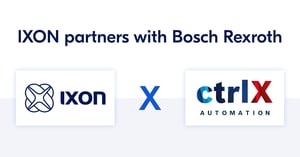- Home
- News
Advanced role-based access control
2 min. read
Shelly Boom
Every machine builder wants to get the best out of their machines, services and processes. It all needs to be faster, more efficient and more productive. To achieve this, collaboration is now more important than ever. Share data with colleagues, customers and service engineers to optimise your machines. IXON Cloud 2’s advanced role-based access control allows you to collaborate in the best possible way.
With IXON Cloud you were already able to make groups and set permissions, but it has been greatly improved with your feedback. With IXON Cloud 2 you can set everything up according to your needs. You can assign roles and groups to users and set even more permissions. With the new possibilities you can easily make a distinction between customers, partners and service teams.
 Role-based access control in IXON Cloud
Role-based access control in IXON Cloud

In the new IXON Cloud 2 user management system, you have to assign every user to a role like service engineer or machine operator. You can create roles for specific user types with different access rights in the Admin app. All managers of roles, access groups and group types are able to define these roles and invite users.
With access categories you can manage who can access which machine information and what service (VPN, VNC, HTTP, Websockets). For example a production dashboard for the machine operator with access to a HMI panel and a maintenance page for the service engineer with VPN and HTTP access.
With groups you can create a flexible structure to grant users access to devices. For example, you can define groups for certain customers, regions or machine types.
With IXON Cloud 2 you don’t have to worry about security issues. We know it’s not desirable that customers can change advanced settings and partners shouldn’t have remote access to every machine. That's why you can give users their own rights. You can assign categories to users, but it’s also possible to set permissions on user level. For example, you can exclude customers from managing pages, cards and enable engineers to view the audit trail and licenses. To further secure your account, it’s also possible to make 2-factor authentication mandatory.
Have you configured everything? Then everyone who has access to the platform only has the rights he needs and only sees what’s important for them. That also means no distractions by an abundance of unnecessary information, which makes it possible to optimally work together. On top of that, you have maximised the value of your machines and you don’t have to worry about security issues or important settings being changed.
Watch our video for a detailed explanation on our advanced role-based user management system.


